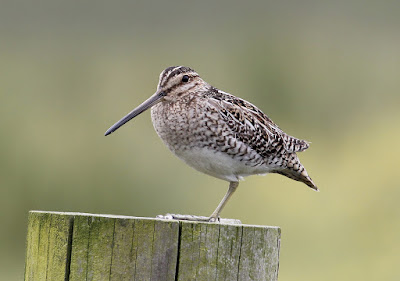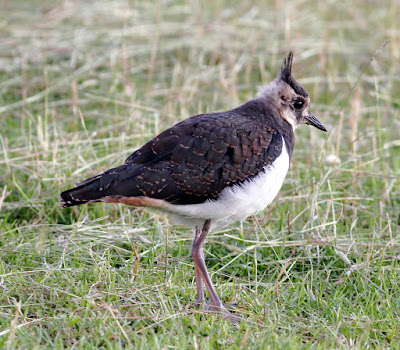I’m not exactly an insomniac, more a light sleeper so these mid-summer mornings often find me awake at 4 in the morning. The kettle was on as I munched a breakfast banana. Through the kitchen window I could see the pipistrelle bats flying around the garden. We seem to have a lot this year as witnessed by the top of the recycle bin and the hundreds of droppings beneath the spot where the bats enter and leave the roof space. No problem, the bats are more than welcome to the many insects they consume.
It wasn’t the brightest morning but I decided to head into the hills and try and bit more photography before the breeding season ends.
The bird list was much as last week although there was a definite increase in the number of Meadow Pipits and Pied Wagtails, more than a hundred pipits and dozens of Pied Wagtails. I saw both species carrying food whereby I imagine by mid to late June the adults will be on their second broods.
A juvenile Lapwing wasn’t for moving from the roadside. The poor light and occasional drizzle needed ISO1600. Maybe there will be a sunny spell for the next visit?
I saw at 4 or more Snipe this morning with at least two of them in “drumming” mode but none would pose on a fence like the one last week. “Drumming”(or “winnowing”) is a sound produced by Snipe as part of their courtship display flights. The sound is produced mechanically in the slipstream of a power dive (rather than vocally) by the vibration of the modified outer tail feathers held out at a wide angle to the body.
I saw three Red Grouse in exactly the same patch of ground as a week ago but no Grey Partridge today.
Taking care not to scare them prematurely the local Oystercatchers are pretty amenable to a photograph, especially if they have young around and need to keep an eye on them.
Oystercatcher
Once very common in Bowland the Redshank seem pretty scarce up here nowadays, a casualty of the overall decline in upland birds like Curlew, Lapwing, Golden Plover and Dunlin. A Redshank came to see me off from its patch before flying back to where it had youngsters some 30 yards away.
Along the stream were two or three pairs of Common Sandpipers, one pair protesting loudly when the car stopped alongside their patch. It was a clear sign of youngsters about, so I left them in peace. The picture is more than a little blurred in the poor light coupled with not enough ISO.
Other birds today – Mistle Thrush, Song Thrush, Greenfinch, Blackcap, Chiffchaff, House Martin, Sand Martin, Swallow, Swift, Blackbird, Siskin, Linnet, Woodpigeon, Stock Dove, Collared Dove , Chaffinch, Reed Bunting, Willow Warbler, Grey Wagtail.
Linking today to Anni's Birding.
Linking today to Anni's Birding.


























































.jpeg)






.jpg)













